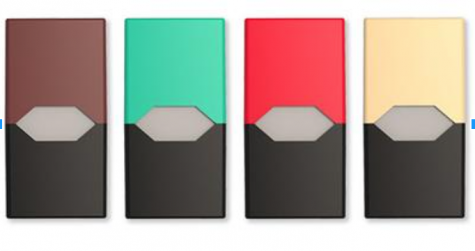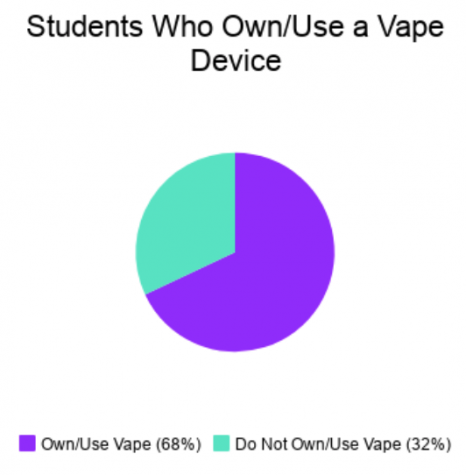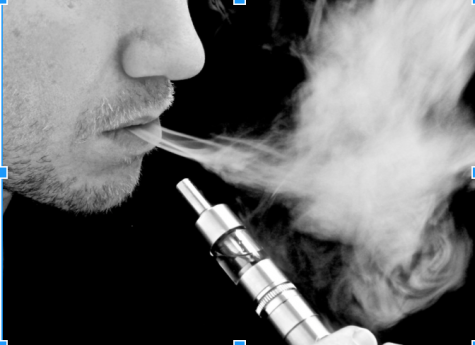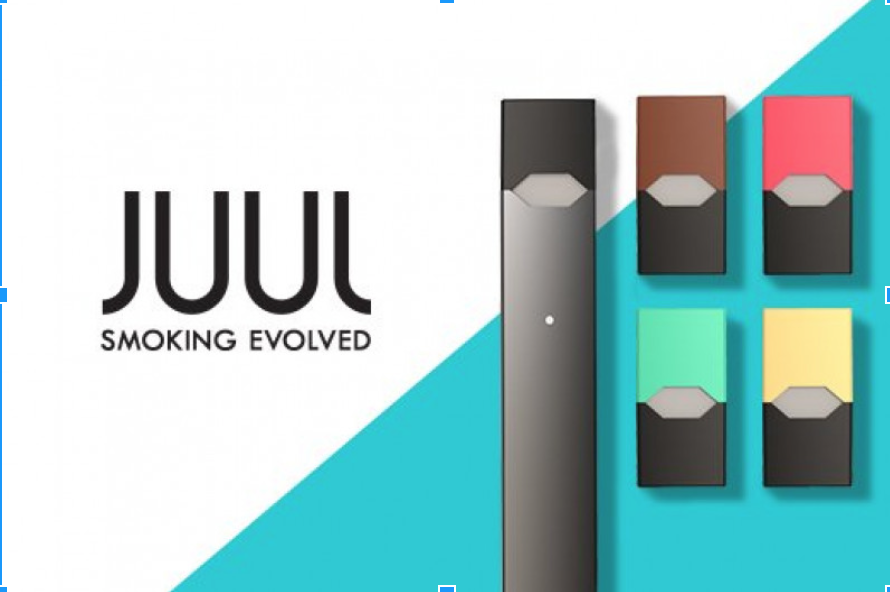What’s Clouding the Minds of Tenafly High School Students?
JUUL has taken over the school, and many students are suffering the consequences.
March 11, 2018
Generation Z has made it a goal to end the widespread use of cigarettes, an epidemic that plagued the previous generation. While trying to lessen cigarette use, they’ve picked up the next worst thing, the JUUL. The JUUL is an e-cigarette designed to help addicted smokers quit, through its high levels of nicotine. But teenagers are using JUULs, and other vaping products, recreationally and recklessly, causing unnecessary and problematic nicotine addictions and, potentially, other serious health issues.

The most recent and prominent problem occurring at the school is the use of JUULs, and other vape paraphernalia, on school grounds. Where do students vape? The least monitored place in the school: the bathroom. Students flee to the bathroom in the middle of class to feed their nicotine addictions. “It’s pretty easy. You just have to watch out for any teachers walking into the bathroom. It’s better to do it in a stall,” said one student, who asked to remain anonymous. In an Echo poll, 68% of students admitted owning, or ever using, a vaping device.

The official JUUL website states that “while we are dedicated to our mission of helping adults switch off cigarettes, we are also incredibly focused on combating underage use. No minor should be in possession of a JUUL or any other tobacco product… While we have made strides, we are working on new approaches to address the issue more effectively.” While the company is trying to make it harder to acquire a JUUL, its actions seem to have not proven effective due to how prevalent JUUL ownership and usage are among minors.
Along with feeding their nicotine addictions, many students head to the bathroom to use another vape device, the dab pen. A dab pen is a vaping device that is used to inhale a liquid form of THC. THC stands for tetrahydrocannabinol, which is the ingredient in cannabis that gives people a euphoric high. Each pen uses a cartridge that contains liquid THC, along with many other unknown chemicals, that gets the user high for several hours. Many students prefer dab pens to actual marijuana due to their lack of smell and production of smoke, making it harder to get caught. Supervisor of Students Mrs. Donna Lewis has walked into the bathroom to see students getting high in the middle of the day. “Have I ever caught any? Yes. Mostly witnessing it in the bathrooms.”

The question is, why have students taken up the habit of vaping? Mrs. Lewis explained: “Maybe a little peer pressure, trying to be cool, the fact that it doesn’t produce smoke. It produces basically air and then dissipates quickly so it’s less noticeable.” An anonymous student said, “I don’t know, it sorta just blew up, and now everyone has one.”
There are no benefits to Juuling besides the two- to three-minute “buzz” students say they get. Nicotine addiction and other possibly serious health consequences are results of being an avid user of the JUUL. Even though Juuling has been considered better than smoking a cigarette, it is not a healthy alternative. Many users do not know exactly what the contents of each pod has in store with regard to health issues and consequences to the body.
The official JUUL website does not disclose what is in the pods besides it containing 5% nicotine. Some students have admitted that their Juuling addiction has hindered their physical health. While some students accept the health consequences, others deny their existence or simply ignore the side effects. An anonymous student said, “I know it’s not good for you, but I’ve never heard of anyone getting problems from Juuling, so I don’t really care.”
Since the initial announcement by Principal James Morrison, stating that anyone caught vaping would suffer serious consequences including a drug test, students have become wary of getting caught; many still JUUL, but are just more cautious now than ever. When asked why it took so long to react to this issue, Student Resource Officer Bill Barnes said, the school “has tried to react to it, but it’s just a matter of pushing things through the system.” The official school policy prohibits any smoking on school grounds. By the school’s definition, smoking includes “the burning of, inhaling from, exhaling from, or the possession of, a lighted cigar, cigarette, pipe, or any other matter or substance which contains tobacco or any other matter that can be smoked, including the use of smokeless tobacco and snuff, or the inhaling or exhaling of smoke or vapor from an electronic smoking device.” The policy defines an “electronic smoking device” as “an electronic device that can be used to deliver nicotine or any other substances to the person inhaling from the device, including, but not limited to, an electronic cigarette, cigar, cigarillo, or pipe.”
When asked about consequences, Mrs. Lewis said, “We’re not a drug testing facility and we have no idea what is in the JUUL, but, if anybody is caught using it, they are immediately sent out for a drug test because we have to be suspicious of what material is in the vape. The results could be THC or something other that we don’t know. It’s not something that we’re in charge of, but we are in charge of making sure our students are healthy in the building and that they’re abiding by school rules.” Mr. Morrison explained the new policy further. “If we catch any student with vaping paraphernalia or actively vaping, we are going to treat it under our Drug and Alcohol protocol,” he said. “All students who are caught will now be drug tested. If a student’s test comes back positive, then they will receive five detentions under the Tobacco Policy. If a student tests then under the Drug and Alcohol Policy, they will receive a suspension.”
Many students still fail to realize the negative effects of vaping, both physically and mentally. At the end of the day, the school’s main goal is to keep its students safe by shielding them from toxic habits.





















































































































































